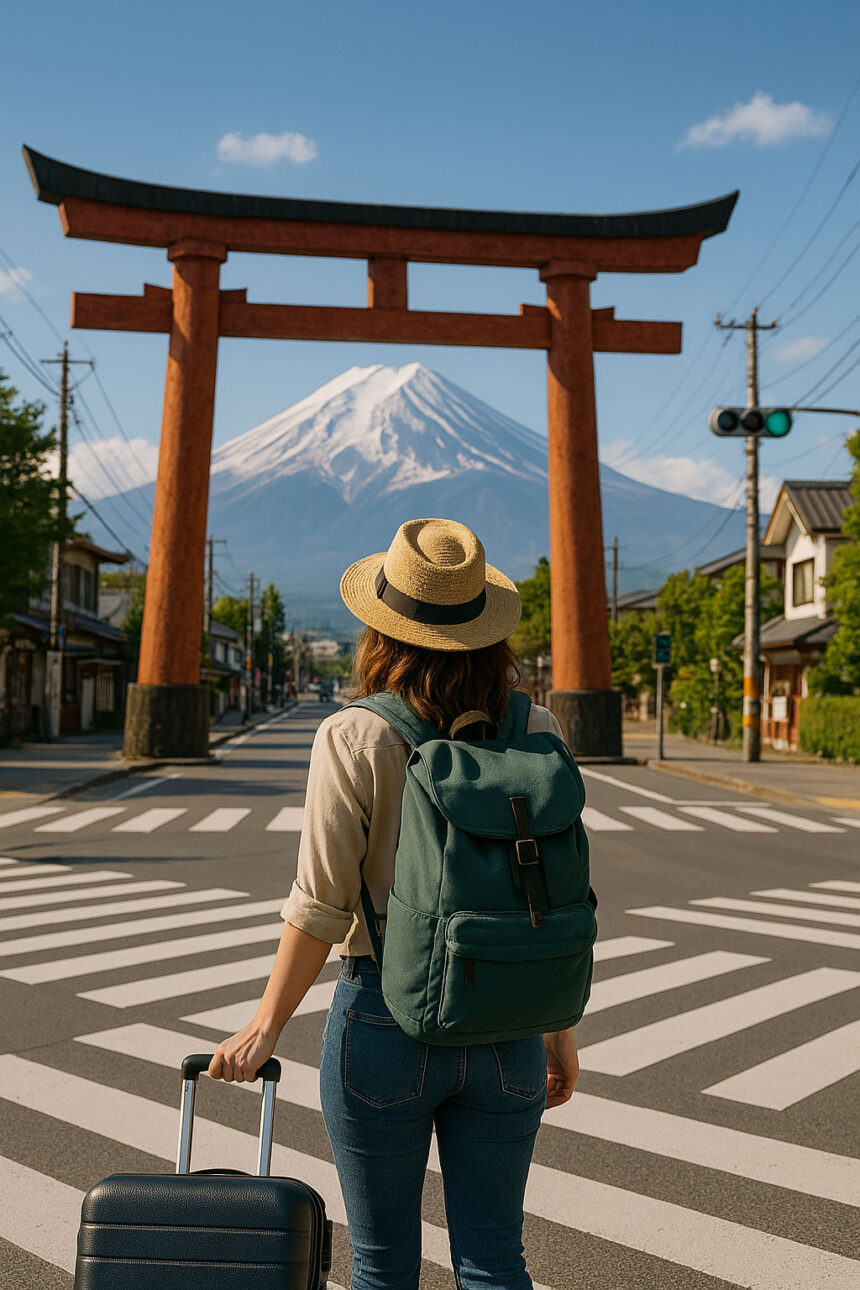Essential Travel Etiquette Rules That Will Make Your Journeys Stress-Free
Travel is more than just visiting new places—it’s about experiencing different cultures, people, and environments with respect and mindfulness. Understanding proper travel etiquette ensures that your journey is enjoyable, stress-free, and leaves a positive impression on locals and fellow travelers alike.
- History of Travel Etiquette
- Facts About Travel Etiquette
- Timeline of Travel Etiquette Evolution
- 8 Essential Travel Etiquette Rules
- 1. Research Local Customs Before You Go
- 2. Be Punctual
- 3. Respect Personal Space
- 4. Dress Appropriately
- 5. Mind Your Volume
- 6. Follow Photography Rules
- 7. Be Environmentally Responsible
- 8. Tipping and Transactions
- Significance of Travel Etiquette
- Daily Life Impacts
- Observance and Best Practices
- Wishing and Benefits
- FAQs About Travel Etiquette
- Review Section
- Conclusion
In this guide, we will explore the history, facts, timeline, significance, daily life impacts, observances, and FAQs about travel etiquette, all written in a human-friendly style.
History of Travel Etiquette
The concept of travel etiquette has evolved alongside human exploration:
Ancient Times: Travelers along trade routes, like the Silk Road, were expected to respect local customs and offer proper greetings. Hospitality was a sign of mutual respect.
Medieval Period: Pilgrimages and long journeys in Europe, the Middle East, and Asia emphasized manners, religious customs, and social hierarchy.
18th–19th Century: With the rise of tourism and leisure travel among elites, etiquette guides for travelers emerged, teaching proper behavior in foreign lands.
20th Century: Air travel and global tourism made etiquette an essential tool for cross-cultural communication.
Present Day: Travel etiquette now includes environmental consciousness, digital etiquette, and cultural sensitivity, reflecting modern social awareness.
Facts About Travel Etiquette
Universal Courtesy Matters: Smiling, greeting locals politely, and showing respect go a long way.
Respect Local Customs: Clothing, behavior, and gestures vary by culture. Research before traveling.
Tipping Norms Differ: Some countries expect generous tips, while others consider it rude.
Digital Etiquette: Avoid loud phone conversations, respect photography rules, and practice privacy awareness.
Environmental Awareness: Dispose of waste properly, avoid disturbing wildlife, and respect protected areas.
Queueing and Public Conduct: Patience, order, and politeness in public spaces reflect good manners globally.
Dining Etiquette: Table manners differ widely; learning a few basics shows respect.
Timeline of Travel Etiquette Evolution
Before 1500s: Oral traditions and local customs dictated traveler behavior.
1500s–1700s: Early guidebooks emerged in Europe detailing manners and cultural norms.
1800s: Etiquette books for tourists became widely available.
1900s: Air travel popularized international etiquette awareness.
2000s: Globalization and online resources expanded etiquette education for travelers.
Present: Focus on cultural sensitivity, environmental responsibility, and technology-conscious manners.
8 Essential Travel Etiquette Rules
1. Research Local Customs Before You Go
Understanding clothing norms, greetings, and local customs avoids misunderstandings.
2. Be Punctual
Time awareness is universal etiquette; some cultures value punctuality highly, while others may have flexible interpretations.
3. Respect Personal Space
Crowded areas are common in cities and public transport. Avoid unnecessary physical contact and maintain polite distance.
4. Dress Appropriately
Clothing can reflect respect for culture and religion. For example, modest attire may be required at temples or religious sites.
5. Mind Your Volume
Speak softly in public places, avoid loud phone conversations, and be considerate on shared transport.
6. Follow Photography Rules
Always ask for permission before taking photos of people, private property, or sacred sites.
7. Be Environmentally Responsible
Avoid littering, respect wildlife, and minimize single-use plastics. Eco-conscious behavior shows respect for both nature and local communities.
8. Tipping and Transactions
Learn tipping customs and proper manners when handling money. In some countries, tipping is optional; in others, it’s expected.
Significance of Travel Etiquette
Physical and Mental Benefits
Reduces travel-related stress and misunderstandings.
Promotes smoother, safer, and more enjoyable travel experiences.
Encourages mindfulness and patience.
Cultural and Social Significance
Shows respect and appreciation for local culture.
Builds positive relationships between travelers and locals.
Enhances cross-cultural understanding and learning.
Economic Significance
Respectful behavior fosters goodwill with service providers and communities.
Positive traveler behavior can boost tourism industries by creating better experiences for all.
Daily Life Impacts
For Tourists: Reduces conflicts and ensures smoother navigation in foreign environments.
For Locals: Encourages positive interactions, protects cultural sites, and promotes hospitality.
For Businesses: Hotels, restaurants, and tour operators benefit from courteous travelers.
For Families: Teaches children respect, patience, and cultural awareness during travel.
Observance and Best Practices
Stay informed about local holidays, traditions, and social norms.
Practice mindful eating, transportation etiquette, and respectful language.
Avoid cultural appropriation and offensive gestures.
Respect queues, public transport rules, and restricted areas.
Observe environmental protection rules in natural and urban spaces.
Wishing and Benefits
Travel etiquette enhances the overall travel experience, leaving lasting memories and positive impressions. A common wish among travelers:
“May your journey be smooth, your interactions respectful, and your experiences rich with cultural understanding.”
Benefits include:
Improved social interactions and safety.
Deeper cultural appreciation.
Reduced stress and anxiety during travel.
Positive impact on local communities and the environment.
FAQs About Travel Etiquette
Q1: Why is travel etiquette important?
A1: It promotes respect, safety, and smooth interactions with locals, preventing misunderstandings and conflicts.
Q2: How do I know the etiquette rules for a country?
A2: Research travel guides, official tourism websites, and cultural blogs. Ask locals or tour guides when unsure.
Q3: Can etiquette rules differ within the same country?
A3: Yes. Urban and rural areas may have different social norms, so be observant and adaptable.
Q4: Is tipping always necessary?
A4: Tipping norms vary by country. Research before traveling; in some places it’s mandatory, in others optional or even rude.
Q5: How can I practice environmentally conscious etiquette while traveling?
A5: Carry reusable water bottles, avoid littering, respect wildlife, and follow local environmental guidelines.
Review Section
Traveler Experiences:
Emily, 29: “Understanding travel etiquette made my trip to Japan incredibly smooth. People appreciated my gestures of respect.”
Ravi, 35: “I realized etiquette isn’t just about rules; it’s about empathy and cultural awareness. Made traveling so much more meaningful!”
Sophia, 27: “Even small things, like queueing or polite greetings, can make a huge difference. I feel more connected to the places I visit.”
Rating: ★★★★★ (4.9/5)
Conclusion
Travel etiquette is not just a set of rules but a mindset of respect, mindfulness, and awareness. Its importance spans cultural understanding, environmental responsibility, and personal convenience. By following the 8 essential travel etiquette rules, travelers can experience stress-free journeys, positive social interactions, and enriching cultural experiences.
Whether you are traveling for business, adventure, or leisure, practicing proper etiquette transforms ordinary trips into meaningful, memorable journeys, benefiting yourself, the communities you visit, and the world at large.








